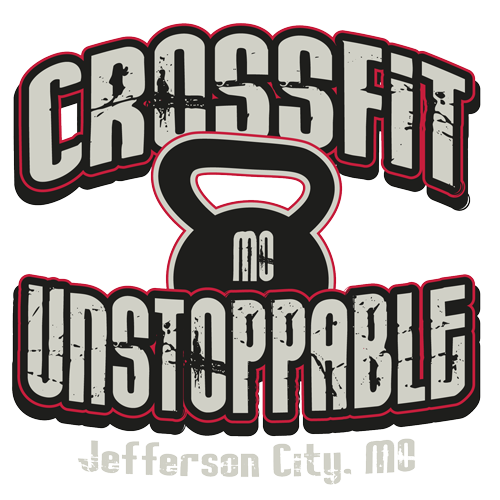The following is a guest post by Amber Larsen of Massage and Health by Amber Kim:
It seems as of late, especially with the boom of the CrossFit Games, the Rx element has become more important in a CrossFitter’s daily workouts. We can admit, we were all beginners at one point in time, and the first time we were able to Rx a benchmark WOD was a huge milestone. The Rx factor means we have gotten stronger, faster, or have built endurance, but what about after we’ve been doing CrossFit for a while? What about when we athletes have been doing CrossFit long enough to Rx most WODs, but some still throw us for a tailspin with either a heavy load or a long distance?
It seems for many that having “Rx” written next to their name on the whiteboard is more important than skill, form, ability, or having the proper foundation of movement and strength. The cold, hard truth, though, is that having the Rx by your name should never be your number one goal in any given WOD. Here’s three reasons why:
Reason #1: Safety
Probably the number one reason why Rx should not be the number priority on your list is safety. Some athletes will try to Rx a WOD even though the load may be too heavy for their current ability level. Doing this can lead to major injuries. For example, when there is a heavy deadlift, most will try to Rx the workout with the assumption that they are able to perform the prescribed deadlift because they have done that weight maybe once or twice before. Some coaches will allow for the athlete to Rx the WOD even with this information on hand.
Common faults that we will see as a result are the rounded back and the jerky movement because the athlete needs some momentum to get the bar up and into full lockout. The massage therapist and biologist in me scream, “No!” It’s so bad for your body to be in that position, and in most cases, I end up seeing those same people in my office a few days later complaining of back problems.
As coaches, it is so important to gauge where athletes are actually at in relation to their goals. When people want that Rx so bad, it’s up to you, the coaches, to let them know it may not be in their best interest to Rx that day because you have been keeping track of their progress. As for you athletes, you must be accountable and honest with yourself about the same issues that concern your coach. Having an Rx by your name is not worth injury.
Reason #2: Ability Level
Another area to keep in mind is your ability level. Everyone has something they need to work on. A great example is the pistol. The pistol is a difficult movement that requires balance (requiring heavy core stabilization), strength in the grounded leg, and flexibility in the hamstrings and quadriceps in the lifted leg. This movement is like a strength movement and dynamic stretch built into one. I often see poor form in the pistol because most people lose core stabilization or come up onto their toes because it’s difficult to stay on the heels. But coming on to the toes can lead to serious knee injury.
For some, it may not be the time to Rx the pistol, but because they give in to desperation and ego, they will attempt to do it anyway. Athletes, please know that it is okay to go back and work the movement from the ground up. If you have not done that, you only cheat yourself. You must perfect the basics. As coaches it is our responsibility to recognize where the athlete needs improvement and where they need to go back and work on the progression.
Reason #3: Quality of Movement
Another reason why scaling should always be an option is in regards to the quality of the movement in the workout. This ties in ability and strength – both are needed to have high quality movement. When people are doing advanced movements without these two attributes, the athletes will have poor form. This reinforces bad habits. Let’s face it, in most cases people are going as fast as they can in time-sensitive WODs. If the athlete has poor form coupled with a time constraint it can be dangerous for everyone involved, especially the athlete.
Take something as simple as a front squat. In a poor-quality front squat, the most common fault I see is that the athlete will lean forward and lead with his or her butt rather than the elbows. This forward lean is damaging for the athlete’s back and knees. As a coach, it’s important to find where the athlete lies in their technical ability and ability to withstand volume and load in order to improve the quality of the movements and reinforce good habits that will stick with them as they progress.
Athletes, when we CrossFit in our home boxes, we are training, even as we compete with our own times and our fellow athletes. When you train, realize that we will not be perfect at every movement, and some movements require more work then others. It’s more important to improve the quality of your WOD than it is to have the Rx by your name.
For the more seasoned CrossFit athlete, it can hurt not having the Rx by your name, but you have to put your pride aside and realize it is virtually impossible to be perfect at every movement. Make sure you build your foundation first. Having the necessary baseline strength and technical ability will affect the quality of your form and ultimately your WOD, in training or in competition, for years to come.

